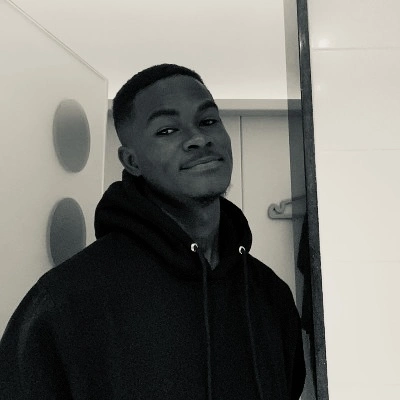
EN
|
FR

How Mobile Apps Are Developed
2024
Development

Othniel
Software Engineer
Mobile App Development refers to the process of creating a software application that is specifically designed to run on portable devices such as smartphones and tablets. As these devices come in various shapes and sizes and run on different operating systems, app developers must consider a range of factors such as screen sizes, hardware requirements, and settings. Due to the competitive nature of the mobile software market and the constant updates to each platform, developers must continuously adapt their development strategies to stay up-to-date. In this guide, we will provide you with a step-by-step process for creating a mobile app that takes into account these various factors and challenges.
Think of a concept for your Mobile App
The first step in mobile app development is to choose the overarching concept for your app. This involves considering your goals and how the app can help you achieve them. By doing so, you will develop a clear project vision that will guide the necessary design requirements and functions required to meet your business objectives.
Recognize The Features And Technology You Require & Desire
A common mistake made by many companies is to overload their mobile app with too many features, particularly in the initial release. It is recommended to categorize the desired features into "must-have" and "nice-to-have" and include only the essential functionality in the first version of the app. User feedback can provide valuable insights into which additional features users are interested in, and they can be added in subsequent updates.
Establish How your App Will Generate Revenue
Although it may seem like a later stage in the development process, it is important to start planning how your mobile app will generate revenue early on. This is because the monetisation strategy you choose will impact how the app's user experience is designed. There are several common methods to generate revenue from mobile apps -
In-App Purchase and Upgrade Advertising An entirely dedicated e-Commerce app Pay-to-download In-App advertisements from third-parties Paid Subscriptions
Technical Discovery
This refers to a research project with a specific deadline that produces a future work plan. It results in tasks, knowledge, and documentation instead of finished projects. The Product Manager is responsible for investing in new technology. The main goal is to determine what, how, and why the team should work on the next project. It is advisable to start a tech discovery when a project narrative requires a significant amount of work from multiple individuals, such as back-end to front-end, engineer to business stakeholders, or team to team. A tech discovery should include a communication strategy, data contracts, and other relevant elements.
Mobile Architecture
Mobile app architecture refers to a set of guidelines, methods, procedures, and patterns used during the development of a mobile application. These guidelines help developers create apps that meet both business requirements and industry standards. However, many apps today are created without adhering to any architecture or standards. A lack of architecture makes an app more difficult to maintain, particularly if team members change, harder to scale or expand upon, more challenging to test, and more prone to errors.
A well-defined architecture for mobile apps makes testing more efficient, supports flexible and agile development methodologies, and simplifies future maintenance while reducing the likelihood of bugs. A solid mobile app architecture will save time and money in both the short and long term.
Create the App
After the mobile app is designed, the development of the app for the chosen platform begins, which is the most challenging part of the process. It is recommended to carry out the development process in a test environment to allow for testing throughout the entire process. App development companies create both the frontend or customer-facing portion of an app and a backend mobile app that enables team members to manage content.
Using a password management tool to keep your working files secure is highly recommended when creating an app. This promotes a secure working environment and enables remote file access for your collaborators.
Make your Apps downloadable via the relevant App Store
Once the app has gone through the necessary development and testing phases, the app development company will deploy or release the app to the relevant app stores such as the Apple App Store, Google Play Store, or other similar platforms, depending on the targeted platform for the app. The release process typically involves submitting the app to the app store for review, which includes verifying that the app meets the app store's guidelines and policies. Once approved, the app will be made available for download to users. After the app has been launched, the development company will continue to monitor the app for any issues that arise and make necessary updates to improve its functionality and user experience.
Promote the Mobile App to your intended audience
App stores offer several tools to help businesses promote their apps and reach the right audiences, including the ability to upload images, videos, and other content to showcase the app's features and functionality. Additionally, app design and development companies can provide valuable insights and assistance in creating effective marketing strategies that leverage both app stores and other platforms to increase app downloads and revenue. Ultimately, a well-executed marketing plan can significantly impact an app's success in the competitive mobile app market.
Create The User Journey & Wireframe
Once you have determined the purpose of your app and the features you want to include, a user experience designer will collaborate with other professionals, such as a digital strategist or an information architect, to develop a wireframe and layout of the user journey that users will follow to complete the desired action. The user experience designer's expertise will ensure that the app's design is intuitive and user-friendly, while also considering the overall visual aesthetics and branding.
UI Design for Mobile Apps Visual Look
Once the wireframe and user journey have been approved, the app designer will design the interface by adding graphics, colors, and other design elements to create a visually appealing and branded experience. This process typically involves creating mockups, which are mid-to-high-fidelity representations of the final product, that help evaluate the product's look and feel.
Mockups play a crucial role in assessing the design's usability and visual coherence, enabling designers to enhance both the design's aesthetic appeal and functionality. They allow for a better understanding of how the app will look and function, making it easier to identify and resolve any issues before the development stage.
Verify And Test Each Feature & Function Of The App
Testing is a critical part of mobile app development, and it should be done extensively to ensure that every feature of the app works as expected. It is recommended to assign a dedicated quality assurance specialist to perform comprehensive QA testing on the app during development. This process will help identify any issues or bugs that need to be fixed before the app is released to the public, ensuring that users have a positive experience and minimizing the likelihood of negative reviews or low ratings. By thoroughly testing the app, developers can address any problems early on, reducing the need for updates or patches after the app is launched.
Data Discovery
The data discovery process involves collecting and organizing information from various databases for evaluation and analysis. This process offers options for organizational structure and security. Additionally, using this data discovery as testing data can enhance the application's performance.
It is important to keep in mind that app development is an ongoing process. Customers will provide feedback through app store reviews, users may have specific feature requests, bugs may arise, and businesses may want to add new functionality. Each of these situations may require the development of a new app version, whether it is a minor bug fix or a major upgrade, and its distribution to both existing users and the app stores.
Share
next journal

For the curious minds
Podcast Coming Soon

